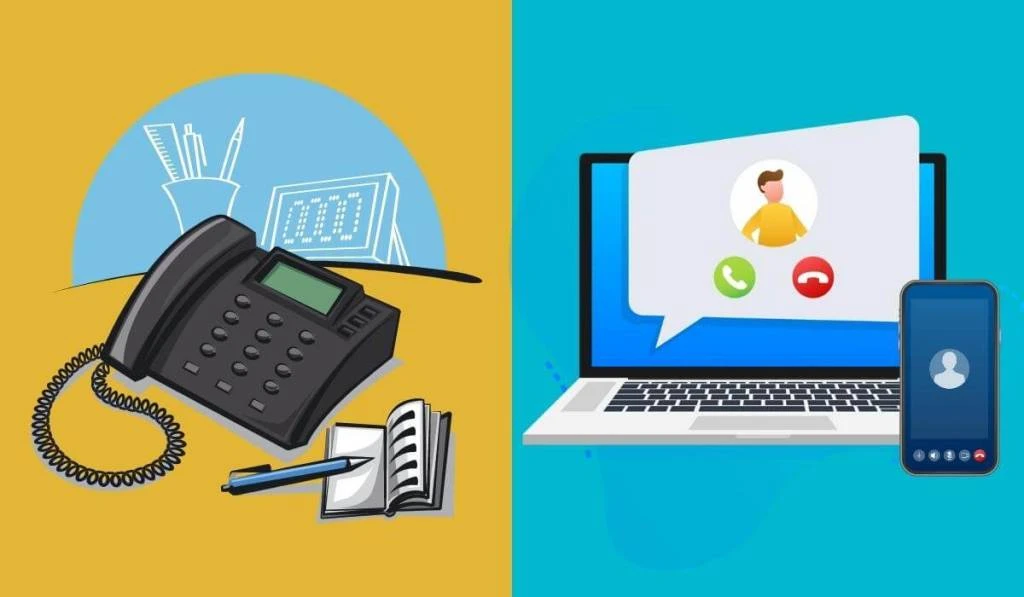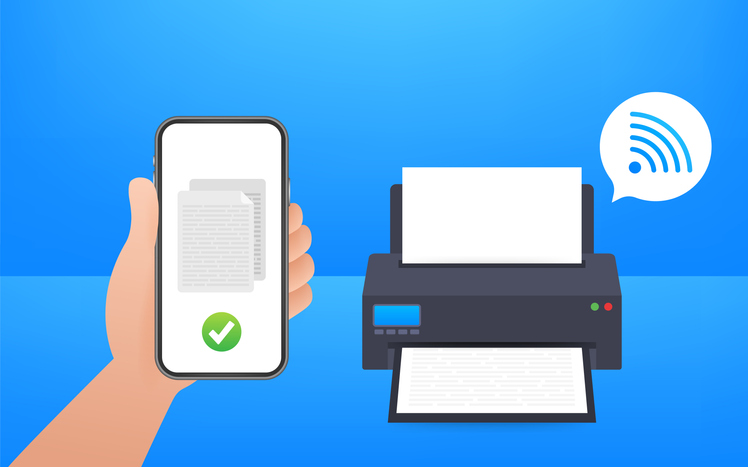In the ever-evolving landscape of business communication, two prominent solutions stand out: PBX (Private Branch Exchange) and VoIP (Voice over Internet Protocol). …
Creating call flows in a virtual Private Branch Exchange (PBX)
Has become Easy
A call flow is essentially the path that a call takes within an organization’s phone system, from the moment it enters the system until it reaches its intended destination.
Virtual PBX
The PBX system utilizes an intuitive block-based diagram interface, enabling users to easily drag and drop new components and create connections within the visual call flow diagram. Changes are applied instantly with a simple button press, all without interrupting ongoing calls in progress.

Voice over Internet Protocol (VoIP) is poised to reshape the way we do business. In recent years, VoIP technology has surged in …
Fax to email services are a valuable feature within Voice over Internet Protocol (VoIP) communication systems. These services bridge the gap between …
Lease phone systems financed from total order value $2,000
Thanks to our finance partner, qualifying customers of ours can turn their VoIP capability acquisition into an easy to manage monthly payment. Please talk to us about available inhouse financing options. Restrictions and limitations apply in accordance with our finance provider rules.
Love the PBX - Easiest Business Phone Installation ever

I have seen a few voice migrations in my time, but the simple, straight forward plug and play the team on the ground was ready for - it was done before I knew! We love the flexibility the Soft PBX brings to our business. Thank you so much, easy to deal with, very much recommended.
David
In the realm of business communication, Private Branch Exchange (PBX) systems have long played a pivotal role, serving as the foundation for internal and external interactions within organizations of all sizes. Traditionally, PBX systems required substantial investments in hardware infrastructure and maintenance. However, the evolution of technology has ushered in a new era of communication systems, with Soft PBX emerging as a versatile and cost-effective alternative. In this comprehensive article, we will delve into the functionalities of Soft PBX and explore how it is transforming the landscape of modern business communication.
Understanding Soft PBX
Soft PBX, or Software-based Private Branch Exchange, is a telephony system that operates entirely on software and computer servers, replacing the need for traditional hardware components. Leveraging Voice over Internet Protocol (VoIP) technology, Soft PBX offers a broad spectrum of communication functionalities. Unlike its hardware-based counterpart, Soft PBX provides increased flexibility, scalability, and cost-efficiency.
1. Call Routing and Distribution
A fundamental feature of Soft PBX is its call routing and distribution capabilities. Soft PBX systems employ intelligent algorithms to efficiently direct incoming calls to their intended destinations, which may include individual extensions, specific departments, or voicemail boxes. These systems can be tailored to adhere to predefined rules and schedules, ensuring that incoming calls are handled optimally. For example, calls can be seamlessly forwarded to available agents, designated agent groups, or remote employees working from diverse locations.
2. Voicemail and Unified Messaging
Soft PBX systems offer robust voicemail and unified messaging functionalities. Voicemail messages are easily accessible and manageable through user-friendly interfaces, often incorporating features such as visual voicemail. Unified messaging consolidates various communication channels—such as email, voicemail, and fax—into a single, streamlined interface, simplifying the user experience.
3. Auto Attendant and Interactive Voice Response (IVR)
Auto Attendant is a prominent feature of Soft PBX, serving as a virtual receptionist that greets callers and provides menu options for routing their calls. Interactive Voice Response (IVR) systems further enhance this functionality by allowing callers to interact with the system using voice or keypad inputs. This enables self-service options, such as checking account balances, placing orders, or scheduling appointments, without the need for human intervention.
4. Conferencing and Collaboration Tools
Soft PBX systems facilitate conferencing and collaboration by offering features such as audio and video conferencing, screen sharing, and document sharing. These tools empower teams to collaborate effectively in real-time, regardless of their physical locations. Moreover, Soft PBX often integrates seamlessly with popular collaboration platforms, enhancing the overall communication experience.
5. Scalability and Cost Efficiency
One of the most compelling advantages of Soft PBX is its scalability. Unlike traditional PBX systems, which require costly hardware upgrades to accommodate growth, Soft PBX can easily adapt to changing organizational needs. Additional extensions, features, and even remote offices can be added with minimal hassle and expense. This scalability makes Soft PBX a cost-efficient solution for businesses of all sizes.
6. Call Analytics and Reporting
Soft PBX systems offer robust call analytics and reporting tools. These tools provide valuable insights into call volumes, call durations, and other key metrics. Analyzing this data can help businesses make informed decisions regarding resource allocation, customer service improvements, and overall communication strategy optimization.
7. Mobile and Remote Accessibility
In an era of remote work and mobile-first communication, Soft PBX excels by providing mobile and remote accessibility. Employees can use Soft PBX features and extensions on their smartphones, enabling them to stay connected and productive from anywhere with an internet connection. This flexibility enhances employee satisfaction and productivity while maintaining seamless communication.
8. Security and Reliability
Security is a paramount concern in modern communication systems. Soft PBX systems are designed with security in mind, offering encryption, authentication, and access control features to protect sensitive communication data. Additionally, Soft PBX systems are known for their reliability, with built-in redundancy and failover mechanisms to ensure uninterrupted communication.
Conclusion
Soft PBX, with its array of advanced functionalities, has revolutionized business communication. It provides a cost-effective, scalable, and feature-rich alternative to traditional hardware-based PBX systems. From call routing and distribution to conferencing and mobility, Soft PBX empowers organizations to streamline their communication processes, enhance collaboration, and adapt to the evolving demands of the modern workplace. As businesses continue to embrace digital transformation, Soft PBX stands as a crucial tool for achieving efficient and effective communication solutions.
The ease with which call flows can be created and customized in a virtual PBX has revolutionized the way businesses handle their communications. In this essay, we will explore the reasons behind the simplicity of call flow creation, its benefits, and the tools that make it possible.
One of the key reasons for the ease of creating call flows in a virtual PBX is the shift from traditional hardware-based systems to cloud-based solutions. Traditional PBX systems often required complex on-site equipment, extensive cabling, and the expertise of specialized technicians to configure and modify call flows. In contrast, virtual PBX systems are hosted in the cloud, eliminating the need for physical hardware and making them accessible through user-friendly web interfaces. This shift to the cloud has made it possible for businesses to set up and manage their phone systems without the need for extensive technical knowledge.
Furthermore, virtual PBX providers have recognized the importance of user-friendly interfaces and have invested in designing intuitive dashboards. These dashboards allow even non-technical users to create, customize, and modify call flows with ease. A typical virtual PBX dashboard provides drag-and-drop functionality, visual flowchart representations, and straightforward configuration options. Users can define call routing, set up voicemail, configure call forwarding, and create interactive voice response (IVR) menus simply by clicking and dragging elements on the screen.
Call routing is a fundamental aspect of call flows, and virtual PBX systems excel in this regard. With a few clicks, administrators can specify how incoming calls should be handled. For instance, calls can be routed based on the time of day, caller ID, or the department or extension dialed. The flexibility and ease of setting up routing rules mean that businesses can adapt their phone systems to match their specific needs and organizational structure effortlessly.
Another valuable feature of virtual PBX systems is the ability to create sophisticated IVR menus. IVR menus are interactive voice response systems that guide callers through a series of options using pre-recorded messages and touch-tone keypad inputs. These menus are widely used for tasks like directing callers to the appropriate department, providing information, or collecting customer feedback. Creating IVR menus used to be a complex and expensive task, but virtual PBX systems have simplified the process. Businesses can now record their own prompts or use professionally recorded messages, then arrange the menu options in a logical sequence through an intuitive interface. This empowers businesses to provide a professional and efficient call experience for their customers without the need for specialized equipment or expertise.
Furthermore, virtual PBX systems often include advanced call analytics and reporting tools that make it easy to monitor and optimize call flows. Administrators can access real-time data on call volume, call duration, call abandonment rates, and more. This data allows businesses to identify bottlenecks, optimize routing rules, and make data-driven decisions to enhance their communication processes continually.
Another reason for the simplicity of call flow creation in virtual PBX systems is the availability of integrations and APIs (Application Programming Interfaces). These integrations enable businesses to connect their PBX with other software and services they use, such as customer relationship management (CRM) systems, helpdesk software, or contact center platforms. By seamlessly integrating these systems, businesses can automate workflows and create more sophisticated call flows. For example, an incoming call could trigger a lookup in a CRM system to display customer information to the agent or automatically create a support ticket.
Furthermore, the rise of artificial intelligence (AI) and machine learning in virtual PBX systems has made it even easier to create dynamic and personalized call flows. AI-powered features like natural language processing (NLP) can be employed to interpret caller intent and direct them to the most relevant department or information. Chatbots and virtual assistants can also be integrated into call flows to handle routine inquiries or provide self-service options, further streamlining the communication process.
In addition to the ease of call flow creation, virtual PBX systems offer several benefits to businesses. One of the most significant advantages is cost savings. Traditional PBX systems required significant upfront investments in hardware and ongoing maintenance costs. Virtual PBX systems, on the other hand, are subscription-based, which means businesses can scale their communication infrastructure without the need for substantial capital expenditures. Additionally, the reduced need for on-site technicians and IT staff to manage the system translates into further cost savings.
Virtual PBX systems also provide greater flexibility and scalability. As businesses grow or adapt to changing circumstances, they can easily modify their call flows to accommodate new departments, remote workers, or seasonal fluctuations in call volume. The ability to scale up or down on demand ensures that businesses can maintain efficient and cost-effective communication solutions.
Another benefit of virtual PBX systems is enhanced business continuity. These systems are typically hosted in redundant data centers, ensuring high availability and minimizing the risk of downtime due to hardware failures or disasters. In the event of a power outage or natural disaster at the business premises, calls can be automatically redirected to alternative locations or mobile devices, ensuring that important calls are never missed.
In conclusion, the ease with which call flows can be created in a virtual PBX has transformed the way businesses handle their communications. The shift to cloud-based solutions, user-friendly interfaces, and advanced features like IVR menus, call routing, and integrations have democratized the management of phone systems. Businesses of all sizes can now create and customize call flows to meet their unique needs, resulting in cost savings, flexibility, scalability, and improved business continuity. As technology continues to advance, virtual PBX systems are likely to become even more user-friendly and feature-rich, further enhancing the communication capabilities of businesses worldwide.



